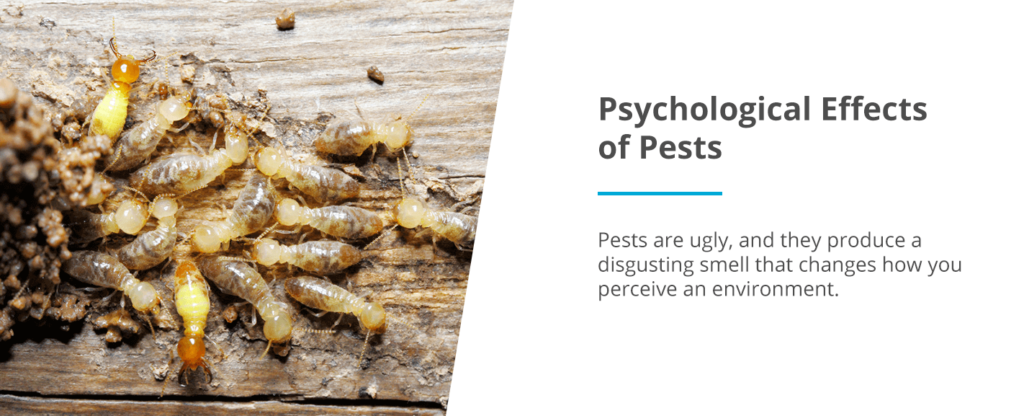Get This Report about Eco Bed Bug Exterminators Dc
Table of ContentsThe Basic Principles Of Eco Bed Bug Exterminators Dc Some Known Factual Statements About Eco Bed Bug Exterminators Dc More About Eco Bed Bug Exterminators DcEco Bed Bug Exterminators Dc - TruthsNot known Facts About Eco Bed Bug Exterminators Dc
Since chemicals are toxic, they are also potentially dangerous to humans, animals, other organisms, and the environment. People who make use of chemicals or regularly come in call with them have to comprehend the loved one poisoning, prospective health and wellness effects, and preventative measures to lower direct exposure to the products they make use of. Risk, or danger, of utilizing chemicals is the potential for injury, or the level of danger involved in utilizing a chemical under a provided collection of conditions.
Nevertheless, applicators can reduce or almost get rid of exposure-- and therefore minimize hazard-- by following the tag directions, using personal safety clothes and equipment (PPE), and taking care of the chemical effectively. For instance, more than 95 percent of all chemical direct exposures originate from facial direct exposure, mainly to the hands and forearms. By wearing a set of unlined, chemical-resistant handwear covers, this kind of direct exposure can be almost eliminated.
The unsafe results that occur from a solitary exposure by any course of access are called "acute results." The four routes of direct exposure are dermal (skin), breathing (lungs), dental (mouth), and the eyes. Acute toxicity is established by taking a look at the facial toxicity, breathing poisoning, and oral toxicity of test animals.
10 Simple Techniques For Eco Bed Bug Exterminators Dc
Intense poisoning is gauged as the amount or concentration of a toxicant-- the a.i.-- required to kill 50 percent of the pets in an examination populace. This action is normally revealed as the LD50 (lethal dosage 50) or the LC50 (lethal concentration 50). In addition, the LD50 and LC50 values are based upon a solitary dose and are tape-recorded in milligrams of pesticide per kilo of body weight (mg/kg) of the guinea pig or in parts per million (ppm).
The reduced the LD50 or LC50 value of a chemical item, the better its poisoning to humans and pets. Pesticides with a high LD50 are the least harmful to human beings if made use of according to the instructions on the product tag. The persistent poisoning of a pesticide is figured out by subjecting test animals to long-term direct exposure investigate this site to the energetic component.
The persistent poisoning of a chemical is harder than acute poisoning to determine via research laboratory evaluation. Products are categorized on the basis of their family member intense toxicity (their LD50 or LC50 values). Chemicals that are identified as extremely toxic (Poisoning Group I) on the basis of either oral, dermal, or inhalation toxicity must have the signal words DANGER and POISON published in red with a head and crossbones symbol prominently showed on the front panel of the bundle label.
The severe (single dose) oral LD50 for pesticide products in this group varies from a trace amount to 50 mg/kg. For instance, exposure of a few declines of a material taken orally can be fatal to a 150-pound individual. Some pesticide items have just the signal word DANGER, which informs you absolutely nothing about the acute poisoning, simply that the product can trigger extreme eye damage or severe skin irritation
Eco Bed Bug Exterminators Dc for Dummies
In this group, the intense oral LD50 arrays from 50 to 500 mg/kg. A teaspoon to an ounce of this material can be deadly to a 150-pound person (exterminator). Chemical items categorized as either somewhat poisonous or relatively safe (Toxicity Classifications III and IV) are called for to have the signal word CAUTION on the pesticide label

All pesticide toxicity values, consisting of the LD50, can be found on the product's Material Security Information Sheet (MSDS) - bed bug exterminator. Chemical tags and MSDS can be gotten from stores or makes. Furthermore, most items additionally know that can be located online. The signs and symptoms of pesticide poisoning can range from a mild skin irritation to coma or even fatality.
Individuals likewise vary in their level of sensitivity to various degrees of these chemicals. Some individuals might show no reaction to an exposure that may trigger serious illness in others (bed bug heater rentals). Since of potential health problems, chemical customers and trainers should acknowledge the typical symptoms and signs of chemical poisoning. The results, or signs and symptoms, of chemical poisoning can be extensively defined as either topical or systemic.
The Greatest Guide To Eco Bed Bug Exterminators Dc
Dermatitis, or inflammation of the skin, is approved as one of the most commonly reported topical effect related to pesticide exposure. Symptoms of dermatitis range from reddening of the skin to rashes and/or blisters. Some people tend to cough, hiss, or sneeze when exposed to chemical sprays. Some individuals react to the solid odor and bothersome effects of petroleum distillates utilized as service providers in chemical items.
This symptom typically subsides within a couple of mins after an individual is eliminated from the direct exposure to the toxic irritant. A reaction to a pesticide item that triggers someone not only to sneeze and cough yet additionally to create serious acute respiratory symptoms is much more likely to be a real hypersensitivity or sensitive reaction.
Systemic impacts are rather different from topical impacts. They usually take place away from the original factor of contact as a result of the pesticide being soaked up right into and distributed throughout the body. Systemic impacts often include nausea or vomiting, throwing up, tiredness, migraine, and digestive tract conditions. In innovative poisoning situations, the individual might experience changes in heart rate, problem breathing, convulsions, and coma, which might result in death.